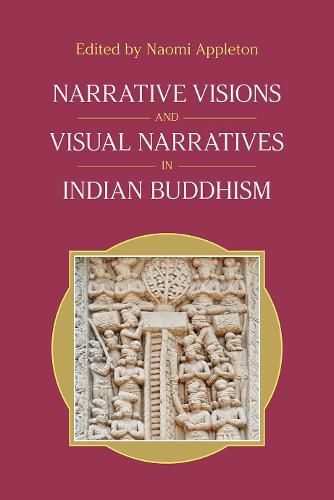Readings Newsletter
Become a Readings Member to make your shopping experience even easier.
Sign in or sign up for free!
You’re not far away from qualifying for FREE standard shipping within Australia
You’ve qualified for FREE standard shipping within Australia
The cart is loading…






This title is printed to order. This book may have been self-published. If so, we cannot guarantee the quality of the content. In the main most books will have gone through the editing process however some may not. We therefore suggest that you be aware of this before ordering this book. If in doubt check either the author or publisher’s details as we are unable to accept any returns unless they are faulty. Please contact us if you have any questions.
This volume explores the interaction between text and image in Indian Buddhist contexts, including not only the complex relationship between verbal stories and visual representations at Indian sites, but also the ways in which visual imagery is used within textual narratives. The chapters are authored by a mixture of textual scholars and art historians, bringing together different disciplinary perspectives in order to seek a richer understanding of how text and art relate, and of the role of narrative imagery in different media and contexts. The book opens with an introduction that explores what narratives and visual narratives are, and why we might want to study narrative images alongside imagery-rich literary narratives. The volume is then divided into three parts. The chapters in Part I: Visual Narratives (Zaghet, Reddy, Zin) explore visual depictions of stories in their own right; those in Part II: Narrative Networks (Mace, Appleton & Clark, Strong) seek to understand the relationship between specific visual and verbal narratives; and those in Part III: Narrative Visions (Gummer, Fiordalis, Walters) primarily investigate how visual imagery and visualisation work in textual narratives. The volume seeks to bridge the divide that traditionally exists between textual scholars and art historians, and to challenge the contributors to think beyond the usual boundaries of our work.
$9.00 standard shipping within Australia
FREE standard shipping within Australia for orders over $100.00
Express & International shipping calculated at checkout
This title is printed to order. This book may have been self-published. If so, we cannot guarantee the quality of the content. In the main most books will have gone through the editing process however some may not. We therefore suggest that you be aware of this before ordering this book. If in doubt check either the author or publisher’s details as we are unable to accept any returns unless they are faulty. Please contact us if you have any questions.
This volume explores the interaction between text and image in Indian Buddhist contexts, including not only the complex relationship between verbal stories and visual representations at Indian sites, but also the ways in which visual imagery is used within textual narratives. The chapters are authored by a mixture of textual scholars and art historians, bringing together different disciplinary perspectives in order to seek a richer understanding of how text and art relate, and of the role of narrative imagery in different media and contexts. The book opens with an introduction that explores what narratives and visual narratives are, and why we might want to study narrative images alongside imagery-rich literary narratives. The volume is then divided into three parts. The chapters in Part I: Visual Narratives (Zaghet, Reddy, Zin) explore visual depictions of stories in their own right; those in Part II: Narrative Networks (Mace, Appleton & Clark, Strong) seek to understand the relationship between specific visual and verbal narratives; and those in Part III: Narrative Visions (Gummer, Fiordalis, Walters) primarily investigate how visual imagery and visualisation work in textual narratives. The volume seeks to bridge the divide that traditionally exists between textual scholars and art historians, and to challenge the contributors to think beyond the usual boundaries of our work.